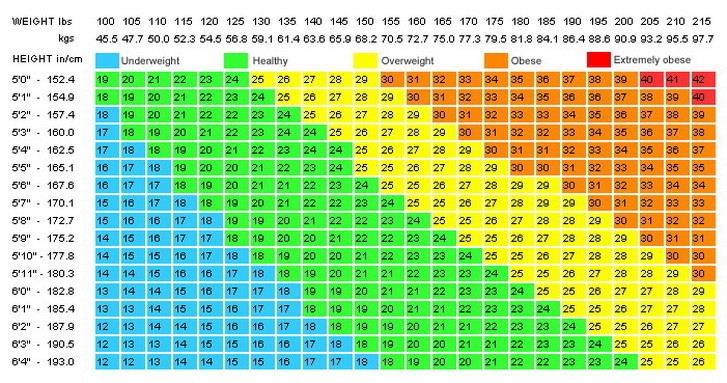
#Body mass index calculator for adult male skin#
All measurements are taken against the bare skin with tape measurements made parallel to the floor with the exact amount of tension at the same spot each time. Both methods require a flexible and nonstretchable measuring tape to measure the circumferences around specific body areas. Navy and Covert Bailey methods, offer an easy and reliable way to measure body fat. Circumference Measuring MethodsĬircumference measurements, used in the U.S. Note also that it's only intended for individuals living a sedentary lifestyle. It only gives a ballpark estimate for those who don't want to bother with measuring tapes or skinfold calipers. It is the least accurate of all the methods. The BMI method calculates body fat percentage based on age, sex, height, and weight. For the Jackson-Pollock and Durnin-Womersley methods, you will need a skinfold caliper to measure the skinfold thickness at several sites on your body. Navy and Covert Bailey methods, you will require a flexible measuring tape to measure the circumferences of various areas of your body. You can choose the BMI method where only your height and weight measurements are required. If you already know your body fat percentage and are confident of its accuracy, you can simply enter the value manually and then note your status in the charts provided. You can choose an estimation method from the calculator's drop-down list. You only need a flexible measuring tape or a good quality skinfold caliper. This body fat calculator will give you a quick and reasonable estimate of your body fat percentage using readily available tools in the comfort of your own home.
#Body mass index calculator for adult male how to#
How to Estimate Body Fat?Īccurate means of measuring body fat exist, such as Dual-Energy X-ray Absorptiometry (DEXA), air-displacement plethysmography, and hydrostatic weighing, but they can be expensive and inconvenient. It links healthy body mass index (BMI) guidelines with predicted body fat percentages. on a new approach for developing healthy body fat percentage ranges for adults. The range values were derived from a study by Dympna Gallagher et al. Thus, the low end of the range would apply to younger adults and then trend upwards with age. Your resting metabolic rate changes as you age fat mass increases while muscle mass decreases.

The BMI Table is a static tool to help you estimate your patients' body fat.Generally, a good body fat percentage range for women is 21 to 35 percent,Īnd for men, it's 8 to 24 percent depending on age. The BMI calculator uses Standard or Metric measures and is available in English or Spanish. The BMI Calculator is an easy-to-use online tool to help you estimate your adult patients' body fat. For more information about BMI percentile and growth charts for children, visit the CDC's Child and Teen BMI and NHLBI's We Can! web pages. A child or teen who is between the 85th and 95th percentile on the growth chart is considered overweight. A child or teen who is at the 95th percentile or above is considered obese. The growth charts use a child's BMI, age, and gender to produce a BMI percentile. It may underestimate body fat in older persons and others who have lost muscle.īMI for children and teens, 2 to 20 years old, is determined by using a BMI table that compares their weight and height along with growth charts.It may overestimate body fat in athletes and others who have a muscular build.The higher the BMI, the higher the risk for heart disease, high blood pressure, type 2 diabetes, gallstones, osteoarthritis, sleep apnea, and certain cancers (e.g., colon, breast, endometrial, and gallbladder).Īlthough BMI can be used for most men and women, it does have some limits: People who are obese (BMI of 30 or above) almost always have a large amount of body fat in relation to their height. People who are overweight (BMI of 25–29.9) have too much body weight for their height. This ratio of weight to height is known as the body mass index (BMI). For adults, a healthy weight is defined as the appropriate body weight in relation to height. BMI is an estimate of body fat and a good measure of your patients' risk for diseases that can occur with overweight and obesity.


 0 kommentar(er)
0 kommentar(er)
